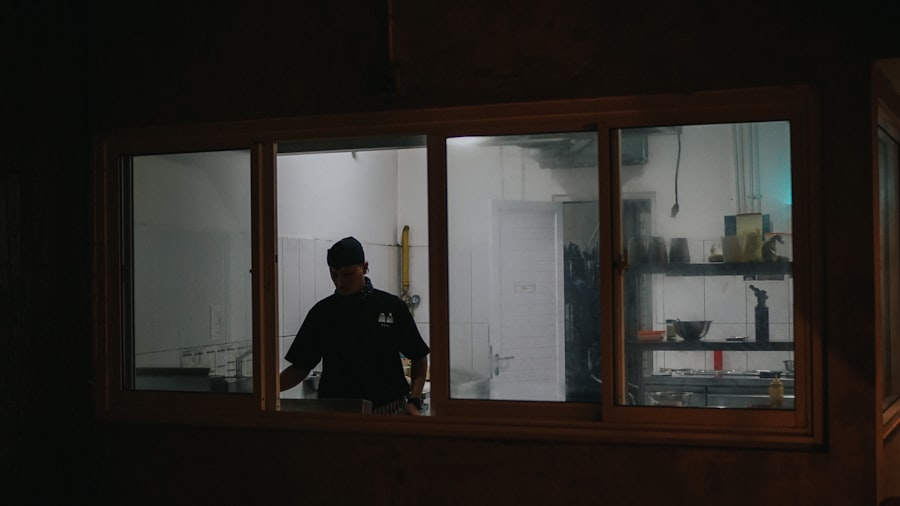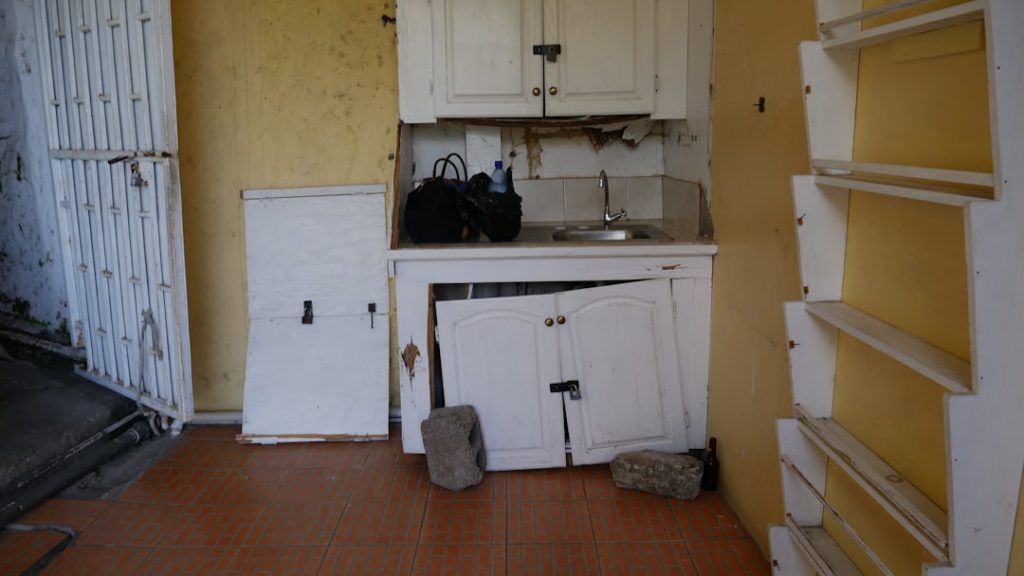Selecting the right renovation contractor is a pivotal step in ensuring the success of your kitchen renovation project. The contractor you choose will not only influence the quality of the work but also the overall experience of the renovation process. Start by conducting thorough research; ask friends, family, and colleagues for recommendations, and check online reviews on platforms like Yelp or Angie’s List.
It’s essential to compile a list of potential contractors and then narrow it down based on their experience, expertise, and past projects. Look for contractors who specialize in kitchen renovations, as they will have a deeper understanding of the specific challenges and requirements involved. Once you have a shortlist, schedule interviews with each contractor.
During these meetings, inquire about their previous work, request references, and ask to see portfolios that showcase their completed projects. Pay attention to their communication style; a good contractor should be responsive, transparent, and willing to listen to your ideas. Additionally, ensure that they are licensed and insured, as this protects you from potential liabilities during the renovation process.
After gathering all necessary information, compare bids carefully, not just on price but also on the scope of work and materials included. This comprehensive approach will help you find a contractor who aligns with your vision and can execute it effectively.
Key Takeaways
- Research and select a reliable renovation contractor to ensure quality work.
- Establish a clear budget to manage costs throughout your kitchen renovation.
- Design your kitchen layout to balance aesthetics with practical functionality.
- Choose durable materials and energy-efficient appliances that suit your style and needs.
- Plan a realistic timeline to coordinate all phases of the renovation smoothly.
Setting a Budget for Your Kitchen Renovation
Establishing a budget for your kitchen renovation is crucial to avoid overspending and ensure that your project remains financially viable. Begin by determining how much you can realistically afford to invest in the renovation. This figure should take into account your current financial situation, potential financing options, and the expected return on investment (ROI) for your home.
A well-planned budget will help you prioritize your spending and make informed decisions throughout the renovation process. When setting your budget, consider all aspects of the renovation, including labor costs, materials, appliances, permits, and unexpected expenses that may arise. A common rule of thumb is to allocate about 20% of your home’s value for a kitchen remodel.
For instance, if your home is valued at $300,000, a budget of around $60,000 would be reasonable. However, this can vary based on your specific goals and the extent of the renovation. It’s also wise to set aside a contingency fund—typically 10-15% of your total budget—to cover any unforeseen costs that may emerge during the project.
By being thorough in your budgeting process, you can ensure that your kitchen renovation remains within financial limits while still achieving your desired outcome.
Designing Your Dream Kitchen

Designing your dream kitchen involves more than just aesthetics; it requires careful consideration of functionality and flow. Start by assessing how you use your kitchen daily. Do you often entertain guests? Do you need ample counter space for meal prep? Understanding your lifestyle will guide your design choices. For instance, if you frequently host gatherings, an open-concept layout with an island for additional seating might be ideal. Conversely, if you prefer a more traditional cooking space, a U-shaped kitchen with defined work zones could be more suitable. Incorporating elements such as lighting, color schemes, and cabinetry styles is essential in creating a cohesive design. Consider how natural light enters the space and how artificial lighting can enhance functionality during evening hours. Choosing a color palette that reflects your personal style while also complementing the rest of your home can create a harmonious atmosphere. Additionally, selecting cabinetry that balances aesthetics with practicality—such as soft-close drawers or pull-out shelves—can significantly enhance both the look and usability of your kitchen. Collaborating with a designer or utilizing design software can help visualize your ideas and ensure that every element aligns with your vision.
Choosing the Right Materials and Appliances
| Material/Appliance | Durability | Cost Efficiency | Maintenance | Energy Efficiency | Suitability |
|---|---|---|---|---|---|
| Stainless Steel Appliances | High | Moderate | Low | High | Modern kitchens, high use |
| Granite Countertops | Very High | Moderate | Low | N/A | Kitchen, bathroom surfaces |
| Laminate Countertops | Moderate | High | Moderate | N/A | Budget-friendly kitchens |
| LED Lighting | High | High | Low | Very High | All indoor and outdoor lighting |
| Wood Flooring | Moderate | Moderate | Moderate | N/A | Living areas, bedrooms |
| Tile Flooring | High | Moderate | Low | N/A | Bathrooms, kitchens |
| Energy Star Refrigerators | High | Moderate | Low | Very High | Energy-efficient homes |
The selection of materials and appliances plays a critical role in both the functionality and longevity of your kitchen renovation. When choosing countertops, consider options like granite, quartz, or butcher block; each material has its unique benefits and aesthetic appeal. For example, granite offers durability and resistance to heat but requires periodic sealing to maintain its appearance.
On the other hand, quartz is non-porous and low-maintenance but may come at a higher price point. Assessing your cooking habits and maintenance preferences will help guide this decision. Appliances are another significant aspect of your kitchen renovation that warrants careful consideration.
Energy-efficient models not only reduce utility bills but also contribute to a more sustainable home environment. Brands like Bosch or Samsung offer high-quality appliances that combine performance with modern design. When selecting appliances, think about their size and placement within the kitchen layout; for instance, a double oven may be beneficial for avid bakers but could take up valuable space in a smaller kitchen.
Additionally, consider features that enhance usability, such as smart technology or easy-to-clean surfaces. By thoughtfully choosing materials and appliances that align with both your aesthetic preferences and practical needs, you can create a kitchen that is both beautiful and functional.
Creating a Timeline for Your Renovation Project
Establishing a timeline for your kitchen renovation is essential for keeping the project on track and managing expectations. Begin by outlining all phases of the renovation process—from initial design consultations to final inspections—and estimate how long each phase will take. For instance, demolition might take one to two weeks depending on the complexity of the project, while installation of cabinets could take another week or more based on their custom nature.
It’s important to build in flexibility within your timeline to account for potential delays caused by unforeseen circumstances such as shipping delays for materials or changes in design plans. Communicate regularly with your contractor to stay updated on progress and any adjustments needed in the schedule. A well-structured timeline not only helps keep everyone accountable but also allows you to plan for disruptions in your daily routine during the renovation process.
Understanding the Renovation Process

Gaining a clear understanding of the renovation process can alleviate stress and help you navigate each stage with confidence. The process typically begins with an initial consultation where you discuss your vision with the contractor and designer. This stage often includes site measurements and assessments to determine feasibility based on existing structures and plumbing layouts.
Following this initial phase is the design development stage where detailed plans are created based on your preferences and budget constraints. Once designs are finalized, permits may need to be obtained before construction begins; this step is crucial as it ensures compliance with local building codes and regulations. The construction phase involves demolition, installation of new structures such as cabinets and countertops, plumbing work, electrical updates, and finally finishing touches like painting or tiling.
Understanding these stages allows you to anticipate what comes next and prepare accordingly.
Maximizing Space and Functionality
Maximizing space and functionality in your kitchen is essential for creating an efficient cooking environment that meets your needs. One effective strategy is to utilize vertical space through tall cabinetry or open shelving that draws the eye upward while providing additional storage options. Incorporating pull-out drawers or lazy Susans can also enhance accessibility in corner cabinets where items are often hard to reach.
Another consideration is the kitchen work triangle—the optimal distance between the sink, stove, and refrigerator—which should ideally be unobstructed to facilitate smooth movement while cooking. If space allows, adding an island can serve multiple purposes: it can provide extra counter space for meal prep, act as a casual dining area, or even house additional storage solutions underneath. Thoughtful planning around these elements ensures that every square foot of your kitchen serves a purpose while enhancing overall functionality.
Adding Personal Touches and Finishing Details
The final stage of your kitchen renovation involves adding personal touches and finishing details that reflect your style and make the space feel uniquely yours. This could include selecting decorative hardware for cabinets—such as knobs or pulls—that complement the overall design theme or choosing a backsplash that adds color or texture to the room. For instance, a subway tile backsplash offers a classic look while colorful mosaic tiles can inject personality into an otherwise neutral palette.
Incorporating artwork or personal mementos can also enhance the character of your kitchen space. Consider displaying cookbooks on open shelves or hanging framed photos that evoke fond memories associated with cooking or family gatherings. Additionally, thoughtful lighting choices—such as pendant lights over an island or under-cabinet lighting—can create ambiance while highlighting key features of your kitchen design.
By focusing on these finishing details, you can transform a functional space into one that truly feels like home.




